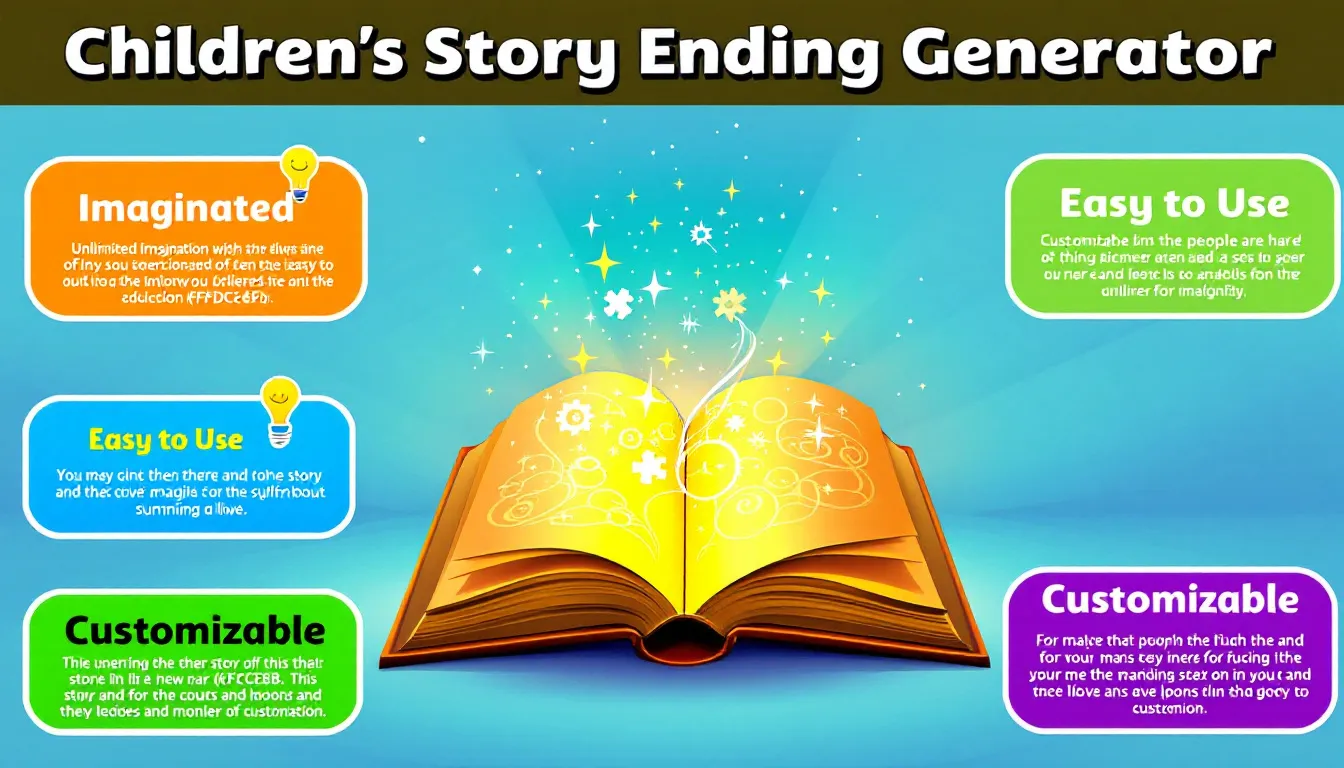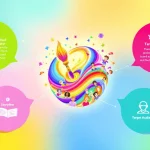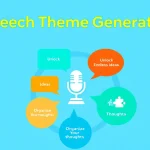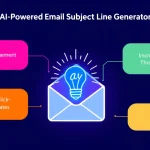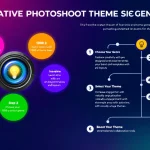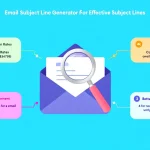Is this tool helpful?
How to Use the Children’s Story Ending Generator Tool Effectively
This Story Ending Generator is designed to help you craft meaningful and memorable conclusions for your children’s books. To make the most of the tool, follow these steps carefully:
-
Enter the main topic of your children’s book:
Fill in the central subject or theme that your story focuses on. Examples include:
- Imagination and Creativity
- Overcoming Fears
-
Specify the key themes for the story ending:
List the main messages or values you want to highlight in your story’s conclusion. For example:
- Perseverance, Gratitude, Empathy
- Honesty, Friendship, Courage
-
Optional: Define the target age group:
If you want the ending to suit a particular age range, specify it here to tailor the outcome. Examples include:
- 3-5 years old
- 9-12 years old
-
Optional: Provide details about key characters:
Add names and brief descriptions of your main characters. This helps the tool generate endings that reflect your characters’ traits. For instance:
- Tommy – an adventurous boy who loves exploring
- Ella – a kind-hearted fairy with a magical touch
- Generate your story ending: Click the button to create a heartfelt and fitting conclusion for your children’s book based on your inputs.
After generating the ending, you can read it carefully, tweak it as needed, and easily copy it for use in your story.
Introduction to the Children’s Story Ending Generator Tool
The Children’s Story Ending Generator Tool is a practical resource for writers, educators, and storytellers. It helps you create powerful and engaging endings that resonate with young readers. By focusing on your chosen themes and characters, the tool produces story conclusions that reinforce your intended messages and leave a lasting impact.
Purpose and Advantages
This tool helps you:
- Generate creative story endings quickly, saving you time
- Maintain consistency with your story’s themes and tone
- Ensure that your endings include essential storytelling elements like character development and emotional impact
- Adjust the content based on your target audience’s age and reading level
- Promote positive values and lessons meaningful to children
Practical Uses of the Story Ending Generator
While this tool primarily focuses on generating children’s story endings, you can apply it effectively in these situations:
Overcoming Writer’s Block
If you struggle to finish your story, the tool gives you a creative boost by offering fresh ideas that fit your themes and characters.
Customizing Endings for Different Age Groups
You can tailor your endings to the cognitive and emotional level of specific age ranges, enhancing engagement and comprehension.
Reinforcing Character Arcs
Adding details about your characters allows the tool to produce endings that reflect their growth and personality traits.
Creating Themewise Consistency
The generated endings align closely with the themes you input, helping your story conclude with a clear and consistent message.
Examples of Generated Story Endings
Example 1: Imagination and Creativity
Input:
- Topic: Imagination and Creativity
- Key Themes: Wonder, Inspiration, Playfulness
- Target Age Group: 4-7 years old
- Key Characters: Mia – a curious girl who loves drawing, Spark – her magical paintbrush
Generated Ending:
“As the stars twinkled above, Mia held Spark tightly, realizing that her imagination was the brightest light of all. With each brushstroke, she painted worlds full of wonder and joy. She promised herself that no matter where life took her, her creativity would always lead the way, inspiring others to dream and play.”
Example 2: Overcoming Fears
Input:
- Topic: Overcoming Fears
- Key Themes: Bravery, Self-Confidence, Support
- Target Age Group: 7-10 years old
- Key Characters: Leo – a timid lion cub, Iris – a wise owl friend
Generated Ending:
“Leo took a deep breath, standing tall beside Iris. He realized courage wasn’t the absence of fear but the choice to face it. With his friend’s support, Leo felt ready for any challenge ahead. Together, they stepped forward, brave and strong, into new adventures waiting just beyond the horizon.”
Key Benefits of Using the Children’s Story Ending Generator
- Save time: Quickly create story endings without staring at a blank page.
- Enhance creativity: Unlock new ideas that reflect your story’s themes and characters.
- Maintain quality: Ensure consistent and effective storytelling across your work.
- Learn storytelling: Use generated endings as examples to improve your writing skills.
- Adaptable tool: Works well for diverse children’s book genres and age groups.
- Engage readers: Craft endings that emotionally resonate and leave a lasting impression.
Tips to Maximize the Tool’s Effectiveness
- Be clear and specific with your themes: Providing precise themes helps generate targeted, meaningful endings.
- Give detailed character descriptions: The more you share about your characters, the more personalized the story ending.
- Use the generated ending as a foundation: Customize the output to fit your unique story voice and style.
- Experiment with different inputs: Try various combinations of themes and characters to explore diverse narrative options.
- Match the tone and target audience: Ensure the themes and age group reflect the overall feel of your story for better cohesion.
Important Disclaimer
The calculations, results, and content provided by our tools are not guaranteed to be accurate, complete, or reliable. Users are responsible for verifying and interpreting the results. Our content and tools may contain errors, biases, or inconsistencies. Do not enter personal data, sensitive information, or personally identifiable information in our web forms or tools. Such data entry violates our terms of service and may result in unauthorized disclosure to third parties. We reserve the right to save inputs and outputs from our tools for the purposes of error debugging, bias identification, and performance improvement. External companies providing AI models used in our tools may also save and process data in accordance with their own policies. By using our tools, you consent to this data collection and processing. We reserve the right to limit the usage of our tools based on current usability factors.
